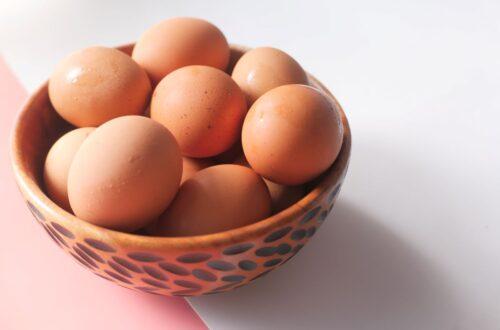
Cocoa Powder Substitutes
Some of the links in this post are affiliate links. This means if you click on the link and purchase the item, I will receive an affiliate commission at no extra cost to you. All opinions remain my own.
As an Amazon Associate I earn from qualifying purchases.
Chocolate is a key ingredient in many recipes, so it’s not one that you can just leave out. Whether you’re making chocolate cake, chocolate mousse or chocolate cream pie, using a cocoa powder substitute might be your only option if you can’t get to the store or have dietary restrictions.

These cocoa powder substitutes will not only rescue your recipe in a pinch, but they will also add unique flavors and textures to your desserts and savory dishes. From natural alternatives like carob powder and dark chocolate to creative options like hot cocoa powder and chocolate chips, this article will explore several different cocoa powder substitutes.
Why you need cocoa powder
Cocoa powder has several purposes in baked goods. Here are some reasons why cocoa powder is needed:
- It adds a rich, sweet chocolate flavor.
- Cocoa powder is a bulking agent that allows for a reduced amount of flour.
- It neutralizes baking soda’s strong, soapy flavor.
- Cocoa powder reacts with baking soda to make baked goods rise.
Common cocoa powder substitutes
A cocoa powder substitute can change the texture, flavor, consistency or color of a recipe. Having the exact ingredient a recipe calls for is ideal, but that isn’t always possible due to dietary restrictions, allergies or not having it on hand. In those cases, these options are great alternatives.
Raw cocoa powder
Raw cocoa powder is less processed than regular cocoa powder. It is more absorbent than regular cocoa powder, so you may have to add some extra liquid if your batter seems dry. You can use this as a 1 to 1 cocoa powder substitute.
Dutch-process cocoa
Dutch-process cocoa powder is created from alkalized cacao beans and is less acidic. Since it is alkalized, it works best in recipes that don’t need to rise. It can be used as a 1 to 1 substitute if your recipe doesn’t have baking soda or baking powder. If you’re making a recipe like chocolate cake that needs to rise, some acidity needs to be added to help the other leavening agents. For every 3 tablespoons of cocoa powder being replaced, add about one-eighth of a teaspoon of cream of tartar, lemon juice or vinegar.
Carob powder
Carob powder is sweeter than cocoa, and its flavor is not as rich. It can be used as a 1 to 1 cocoa powder substitute, but you will need to use less sugar than the recipe calls for to balance out the sweetness. If the chocolate flavor is not quite to your liking, add more carob powder.
Unsweetened baking chocolate
Unsweetened baking chocolate comes in bars and is made from the cacao bean and cocoa butter. Use 1 ounce of unsweetened baking chocolate for every 3 tablespoons of cocoa powder the recipe calls for. Since it comes in bars, you will need to melt it before using it.
“When I run out of cocoa powder, I look to unsweetened or baker’s chocolate. I melt it down and use it in place of the cocoa powder. I also leave out a little of the oil or butter in the original recipe as well.”
— Laura Sampson, Little House Big Alaska
Semi-sweet chocolate chips

Semi-sweet chocolate chips have some sugar added but are still bitter with a rich flavor similar to cocoa powder. Use 6 ounces of semi-sweet chocolate chips for every 6 tablespoons of cocoa powder your recipe calls for. For every 6 ounces of chocolate chips you use, reduce the sugar in the recipes by 7 tablespoons and reduce the butter or oil in your recipe by a quarter cup. Since chocolate chips already contain fat, they won’t stiffen the recipe like cocoa powder.
If you are substituting for Duth-process cocoa powder, add one-eighth of a teaspoon of baking soda for every ounce of chocolate chips used. Microwave the chocolate chips in 10-second increments, checking for softness and stirring each time. When the chocolate chips completely melt, you can add them to your recipe.
“I ran out of cocoa powder but wanted to make brownies, so I substituted semi-sweet chocolate chips in its place. Since the chocolate chips are sweeter and contain a little more fat, I removed just a little sugar and butter from the recipe. It worked great!”
— Samantha Erb, Everyday Family Cooking
Hot cocoa mix
Hot cocoa mix is made up of unsweetened cocoa powder and sugar. It can be used as a cocoa powder substitute in a 2-1 ratio. This means that for every 1 tablespoon of cocoa powder the recipe calls for, add 2 tablespoons of hot cocoa mix. You can reduce the amount of sugar in your recipe as hot cocoa mix already contains some. Add the hot cocoa mix before gradually incorporating the sugar until it is sweetened to your liking.
Carob chips
You will need to melt carob chips before adding them to the recipe. Use 1 ounce of carob chips for every 3 tablespoons of cocoa powder the recipe calls for. Because they add sugar and fat, omit 1 tablespoon of butter, shortening or oil from your recipe. Gradually add sugar until the recipe is sweetened to your liking. For best results, add melted carob chips when you cream the butter and sugar.
Dark chocolate
You may need to reduce the amount of sugar and fat you add to the recipe, as dark chocolate already contains both ingredients. Replace every 3 tablespoons of cocoa powder with 2 tablespoons of dark chocolate. For every 2 tablespoons of dark chocolate, reduce a tablespoon of fat. Melt the dark chocolate and incorporate it with the wet ingredients in your recipe.
Couverture chocolate

Couverture chocolate is otherwise known as melting chocolate and contains more cocoa butter than other types of chocolate. It contains a higher fat content, so you will have to reduce the amount of fat you use in your recipe. To use couverture chocolate as a cocoa powder substitute, melt the couverture chocolate and then use 4 tablespoons for every 3 tablespoons of cocoa powder required.
Final thoughts
When using a cocoa powder substitute, it’s important to remember that the recipe may not turn out exactly like the original. Follow the directions above carefully, and although the flavor, texture and color may be different than when using cocoa powder, these alternatives are worth trying in a pinch.
This article originally appeared on Food Drink Life.
Amazon and the Amazon logo are trademarks of Amazon.com, Inc, or its affiliates.





